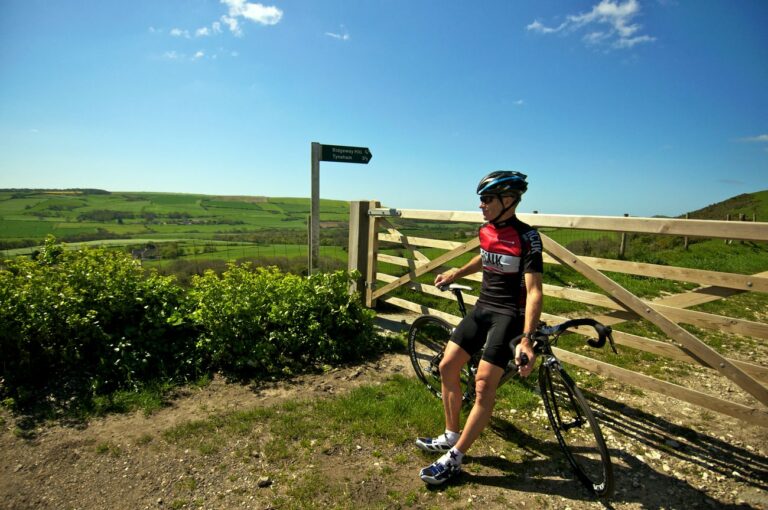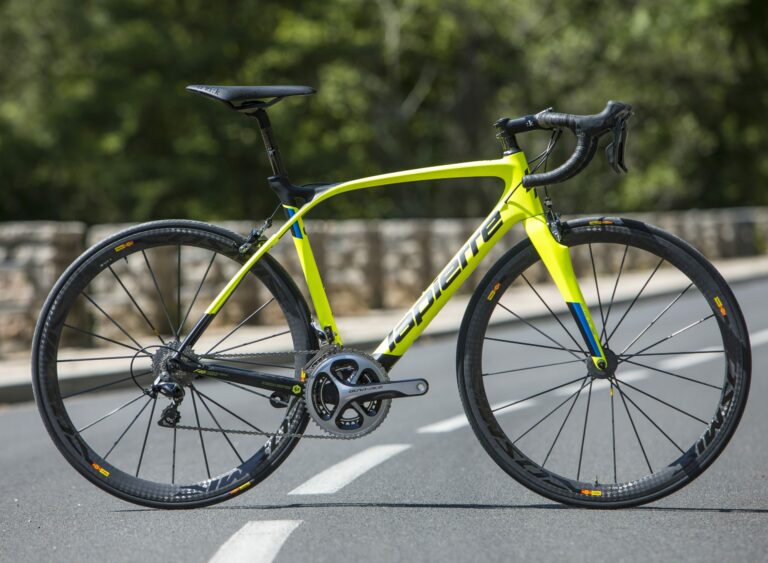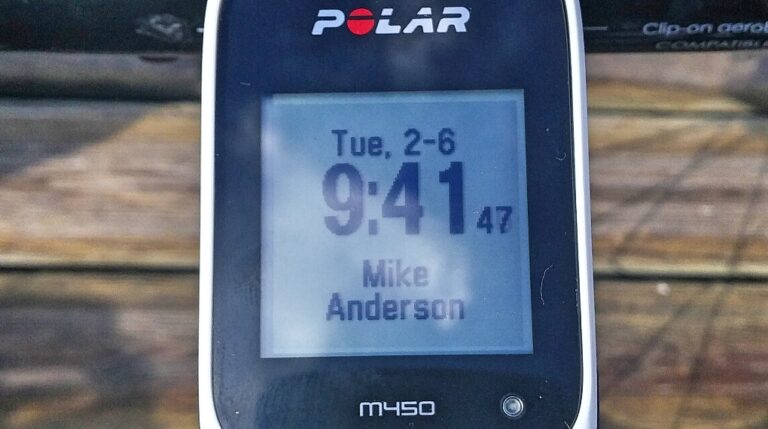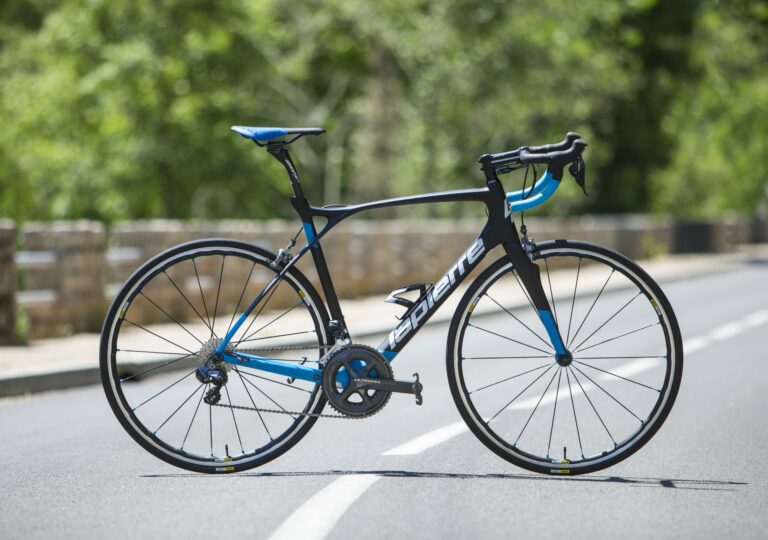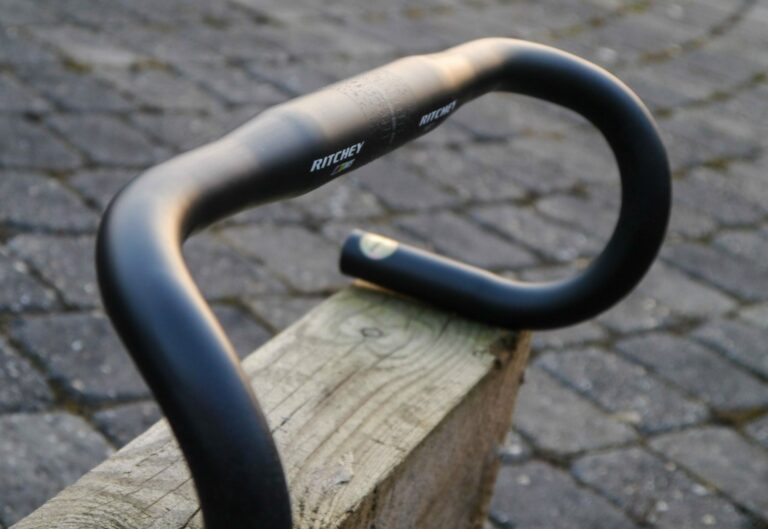When the Emonda was first launched it’s purpose was clear: Trek had endeavoured to make the lightest climbing bike in the world. Although its title may have just been stolen by Merida’s new Scultura, the top of the range Emonda SLR 10 weighs in at 4.65kg which is over 2kg under the UCI weight limit.
So when Trek announced that they were going to be making an aluminium version of the Emonda, the ALR, they’d almost given themselves no choice but to try and make as light an aluminium frame as possible. And they’ve achieved that, with the ALR frame coming in at a claimed 1,050g.
I haven’t stripped the test bike down so I can’t verify whether that’s true or not, but what I can tell you is that the full bike weighs in at a credible 7.8kg.
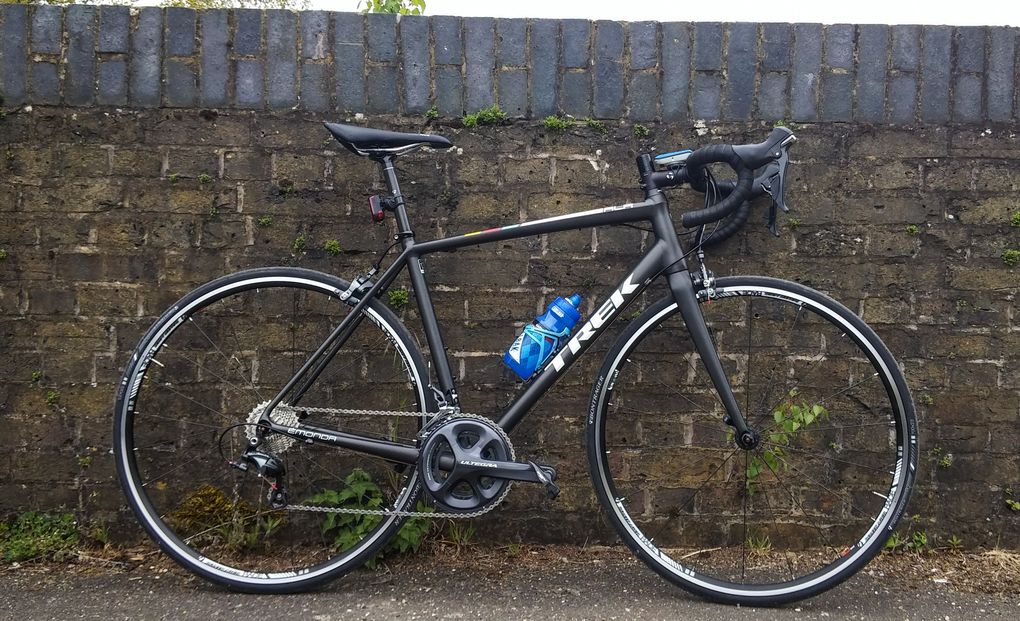
And there’s loads of scope for bringing that number down, too. The ALR is specced with Bontrager’s Race VR-C bars, solid alu offerings but definitely add a few grams onto the total, and the basically are fairly basic.
I’ll come on to the wheels but the bars are the one aspect of the build that, personally, I’d look to change pretty soon. I’m not a big fan of Bontrager’s alloy bars. It’s nothing to do with the weight, but I find the shape doesn’t quite sit well with where I like to place my hands the most.
Still, that’s a personal thing and they’re more than adequate at the £1,700 price tag which is where the Ultegra-equipped version of the ALR sits, and at that price it’s not too unrealistic that you could think about upgrading some bits not too long after buying the bike. It’s also worth pointing out that Trek offer the ALR as a frameset for £700, so if you’re happy with your kit but fancy a frameset upgrade, that could be a very cost-effective option.
Groupset is full Shimano Ultegra 6800 and we’ve got nothing but praise for that choice. The current incarnation of Ultegra is good enough to grace bikes with twice the ALR’s £1,700 retail price and, frankly, you’re getting kit good enough that you’ll probably never think about needing to upgrade for purely functional reasons.
But enough of the minutiae, you say, how does it ride? Well after my first three-hour spin on the Emonda ALR initial impressions are very good indeed. I’ve put in a lot of miles on alloy bikes in the past, and currently own a Cannondale CAAD10 which I absolutely adore, and the early signs are that the ALR could be right up there with the very best alloy bikes on the market.
Ride quality is, like the CAAD10, a tiny bit on the harsher side but it’s by no means a teeth rattler. Over poor road surfaces I definitely felt a little more through the back end than with, say, my Ridley Helium which I ride the same roads with frequently, but even after three hours there was no feeling of fatigue.
Plus, the best way to improve comfort isn’t anything to do with the frame, it’s the tyre pressure and choice that will give you the most noticeable difference there. The ALR comes as standard with 23mm Bontrager Ride 2 tyres, and I’m sure when I swap those out for something a little more forgiving then any worries I may have had about harshness will disappear altogether.
In terms of stiffness, first suggestions are that there’s nothing to worry about. Top end aluminium frames are usually very stiff because they have to be to counteract the fact that aluminium itself is a soft metal (also a reason why alu is always alloyed with something else). The nice thing about the ALR is that Trek haven’t had to make the tubing too chunky in order to achieve the required strength, and it gives the bike a sleek, classic look. Not functional, but always appealing. Out of the saddle uphill and bombing along the flat at over 40km/h I haven’t been able to fault it yet, although I’ll keep pushing it as far as my (admittedly not Kristoff-esque) legs will allow. The handling is similarly impressive. There aren’t too many bikes that I’ll jump on and head downhill without a bit of caution early on, but I was more than comfortable hitting some of my regularly descents without any unneeded caution, suggesting that the ALR will be a more than capable all-rounder, not just an alu climber’s bike.
The only other thing to mention this early on is that (and we seem to say this about so many bikes) the wheels don’t do justice to the frame quality. Bontrager’s Race wheels might be tubeless ready, which is a bonus, but they’re a basic set that have obviously been specced to keep the price down.
They have an RRP of £240 and weigh in at nearly 2kg before you’ve even thought about tyres. While you might be glad of something you can beat up during the winter, the ALR is clearly a race bike and definitely deserving of an upgrade.
I’ll be putting in loads more miles on this one, and changing around certain aspects of the build like tyres and wheels to see how it affects the ride, so keep you’re eyes peeled for a full review in the coming weeks.


